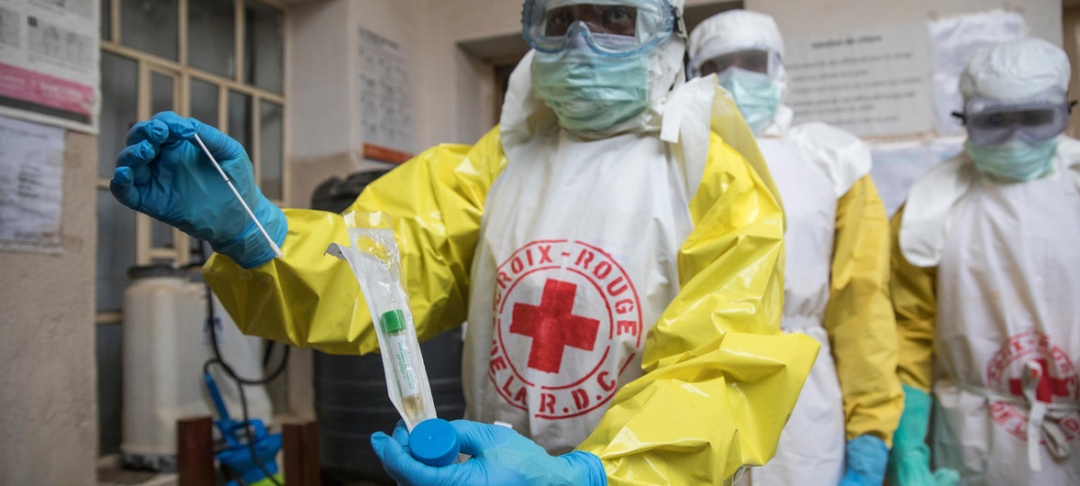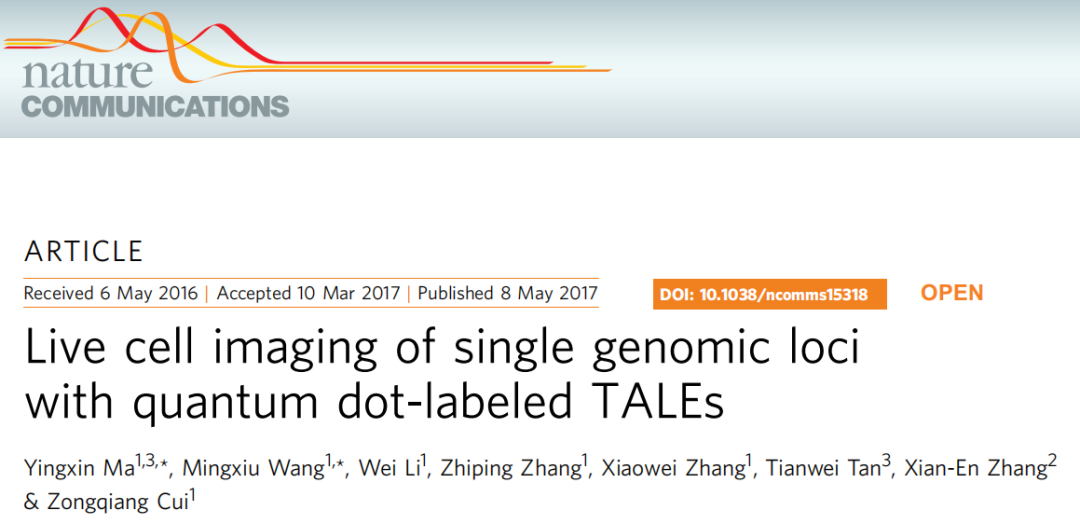
Editor's Notes
"In areas like synthetic biology, gene editing, brain science, and regenerative medicine, life sciences are experiencing a new revolution... Science and technology have never had such a profound impact on the country's future and the well-being of its people as they do today,” stated General Secretary Xi Jinping in the journal “Qiushi”.
As an emerging research field in recent years, synthetic biology has attracted scientists from diverse backgrounds such as biology, physics, and chemistry. They have come together to conduct research, each with their unique reasons and goals, resolutely walking this path of scientific exploration filled with unknowns and challenges. To this end, we have invited some of these scientists to share their life experiences with us.
Honored Guest of This Edition-Dr. Ma Yingxin
In the non-fiction book "The Hot Zone" about the Ebola virus, American writer Richard Preston wrote, "Civilization is only one airplane flight away from a virus.” When the Ebola virus first appeared, it infected 358 people and resulted in 325 deaths within two months, with a high mortality rate of 90.7%.
Viruses spread rapidly, and have diverse modes of transmission. Their predatory reproduction can quickly disrupt the normal functioning of organisms. Additionally, since viruses mutate easily, they are unpredictable. Currently, the global focus is on the novel coronavirus, and its variants, including Alpha, Gamma, Beta, Delta, and the most recently identified Omicron, all exhibit high transmission rates. Conducting fundamental research on known viruses to build defense mechanisms against unknown viruses is an effective approach in virology research.
The guest of this edition of "Interviewee Opinions" series is Dr. Ma Yingxin from Institute of Synthetic Biology, Shenzhen Institutes of Advanced Technology, Chinese Academy of Sciences.
Dr. Ma earned her bachelor's degree in chemistry from Beijing Normal University, followed by master's degree and PhD degree from Beijing University of Chemical Technology. He conducted postdoctoral research at The Second People's Hospital of Shenzhen and collaborated on research during his doctoral and postdoctoral phases at the Wuhan Institute of Virology of the Chinese Academy of Sciences. In June 2019, she joined the Shenzhen Institute of Synthetic Biology and became the first member of Dr. Zhang Xian’en's team in Shenzhen. Since 2013, Dr. Ma has been engaged in virology research, and she officially established her research team in October of this year.

Picture | Ma Yingxin (Source: Interviewee)
Realizing the Research of Virulent Virus in BSL-2 Laboratory
Internationally, biological laboratories are categorized into four levels based on biosafety levels, including the infectiousness and hazard of infectious agents. These levels are BSL-1, BSL-2, BSL-3, and BSL-4. The higher the laboratory level, the higher the level of protection. According to documents published by the Ministry of Education of the People's Republic of China, as of 2020, there were a total of 84 high-level biosafety laboratories approved by the Ministry of Science and Technology. Among these, there were 81 laboratories at Biosafety Level 3 (BSL-3) and 3 laboratories at Biosafety Level 4 (BSL-4).
In general, tasks such as isolating virus strains, studying the viral invasion mechanisms, tracking mutations, developing vaccines and conducting drug screening are carried out in BSL-3 laboratories. Research involving unknown virulent viruses or pathogens with unclear transmission routes, such as the Marburg virus and Ebola virus, requires BSL-4 laboratories.

Picture 丨 Study of Ebola Virus in the Laboratory (Source: news.un.org)
Research on virulent viruses like COVID-19 typically requires laboratories at Biosafety Level 3 (BSL-3) or above. The limited number and restricted capabilities of approved labs can have an impact on the progress of fundamental virus research, vaccine development, drug discovery, and production testing. In response to the current limitations of high-level biosafety labs not fully meeting research needs, Dr. Ma Yingxin aims to enable research on virulent viruses to be conducted in BSL-2 laboratories.
"One of the primary research directions of our team is to construct a universal pseudovirus system through the design, splitting, and assembly of viral genomes, providing a simple technical platform, so that research on virulent viruses can be carried out in BSL-2 laboratories,” says Ma Yingxin.
Traditional pseudoviruses are typically chimeric virus particles, expressing the recombinant glycoprotein of one virus on the surface of another replication-deficient virus vector. Due to their high level of biosafety and stability, they have been widely used in vaccine development, antibody neutralization studies, simulating viral entry into cells, and positive controls in diagnostic test kits.
While there is substantial research on traditional pseudoviruses in both academic circles and the industry, they have their limitations. For instance, when constructing pseudoviruses for COVID-19, they are based on the vector backbone of other viruses (such as lentiviruses or oral herpes simplex viruses) and express the protein S of the coronavirus. These pseudovirus particles apply only to studies of a series of biological processes or invasion mechanisms related to the protein S.
Ma Yingxin aims to create a universal pseudovirus system where all virus components, including structural and functional proteins, come from the COVID-19 virus itself. These pseudovirus particles can be used to study more aspects of the COVID-19 virus's life processes, offering a more authentic and accurate reflection of the virus's lifecycle, and better aligning with clinical requirements.
“At the same time, to meet the most crucial safety requirements of pseudoviruses, we split the viral genome, so the final pseudovirus particles only contain a small part of the virus's whole genome. They cannot replicate to produce progeny viruses, thus avoiding the risk of viral infection and spread," Ma explains.
According to her, "The principles behind assembling virus gene segments are based on the presence of packaging signals in the coronavirus genome. Gene segments containing relevant sequences can be effectively assembled into virus particles, but other gene segments cannot be specifically recognized and assembled. This part of the work was carried out in collaboration with Dr. Dai Junbiao, a researcher at the Shenzhen Institute of Synthetic Biology.”
These pseudovirus particles not only make it possible to conduct research on virulent viruses in BSL-2 laboratories while ensuring safety but also offer a more authentic glimpse into the virus's lifecycle and molecular mechanisms.
Ma Yingxin's research team has utilized this pseudovirus system to explore the mechanisms of novel coronavirus entry, replication, and assembly. The team also hopes to expand the system's applicability based on the similarities among coronaviruses. Using the novel coronavirus as a research model, they aim to establish safety system construction principles for other unknown viruses, applying a "learn from one, apply to many" approach.
"Of course, coronaviruses are just our current research focus. In the future, we will research more types of viruses, such as African swine fever virus. Eventually, we will summarize research strategies for different types of viruses and obtain universal guiding principles. In case of future outbreaks, we can respond rapidly," She adds.
Before the outbreak of the COVID-19 pandemic, Ma Yingxin's team primarily focused on HIV research, expanding single-virus marking and tracking systems to visualize the entire life cycle of infectious agents. They addressed fundamental scientific questions in virology and provided new analytical approaches for screening of antiviral targeted drugs.
One of their projects was recognized as one of the “China’s Top 10 Advances in Virology" in 2016, as well as one of the top 10 advances in the field of HIV research that year. Currently, Ma Yingxin is leading a National Key R&D Program in Synthetic Biology (Young Scientist Program, 2021YFA0910900) with a focus on design and synthesis of complex pathogen tracking and marking systems.

Picture 丨 In 2016, this research was rated as one of the China’s top 10 advances in virology and one of the top 10 advances in HIV research that year.
Developing On-the-spot Portable Diagnostic Methods
After the outbreak of the COVID-19 pandemic, the team swiftly engaged in relevant research shifting their focus from HIV to the novel coronavirus. In addition to conducting fundamental research on the infection pathways and mechanisms of the novel coronavirus, the research team also aimed to contribute to the in vitro diagnosis of the novel coronavirus.
Rapid on-site nucleic acid tests for COVID-19 serves as the "gold standard" for detecting the virus. In this context, numerous countries worldwide have approved a plethora of related test kits, offering a rich array of diagnostic tools for COVID-19 testing. Domestic nucleic acid testing primarily falls into two categories: routine PCR tests and rapid antigen tests. Routine PCR testing techniques are well-established and offer large testing capacities in a single run but tend to be time-consuming. On the other hand, rapid antigen testing products provide quicker results and are more convenient but offer smaller testing capacities. According to publicly available reports, some rapid testing products can complete the testing process in as little as 30 minutes.

Picture 丨 In this study, the live cell imaging of single genomic loci was realized.
Ma Yingxin mentioned, "Currently, nucleic acid testing still faces limitations in terms of portability and heavy reliance on equipment, which hinders its use in certain special scenarios.”
Currently, Ma Yingxin's research team is developing rapid and portable diagnostic methods tailored for specific scenarios, such as customs and airports, with the aim of achieving on-the-spot portable diagnosis.
According to Ma Yingxin, "Our research team is dedicated to the development of novel pathogenic analysis methods based on the design and synthesis of new materials, hoping to provide a safer and more convenient technological platform for in vitro diagnosis of COVID-19 or other viruses. Currently, the sensitivity of the testing method we have established is similar to or slightly superior to routine PCR testing techniques. However, in terms of stability and compared with commercial products, further optimization and improvement are still needed, and there is still a way to go before industrial transformation.”

Picture 丨 In this study, the marking and tracing of single RNA in living cells were realized.
At the end of the interview, Ma Yingxin stated, "After the outbreak of the pandemic, I have seen people from all walks of life actively contributing to the fight against the pandemic. For those of us engaged in virology research, this sense of mission becomes even stronger. It is also the main driving force for me to continue to engage in this research direction after establishing our research team.”
Reference: http://ydyl.china.com.cn/2020-10/12/content_76797793. htm